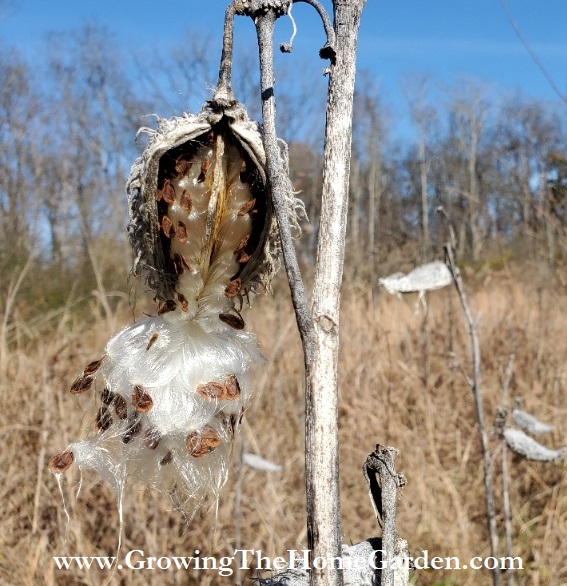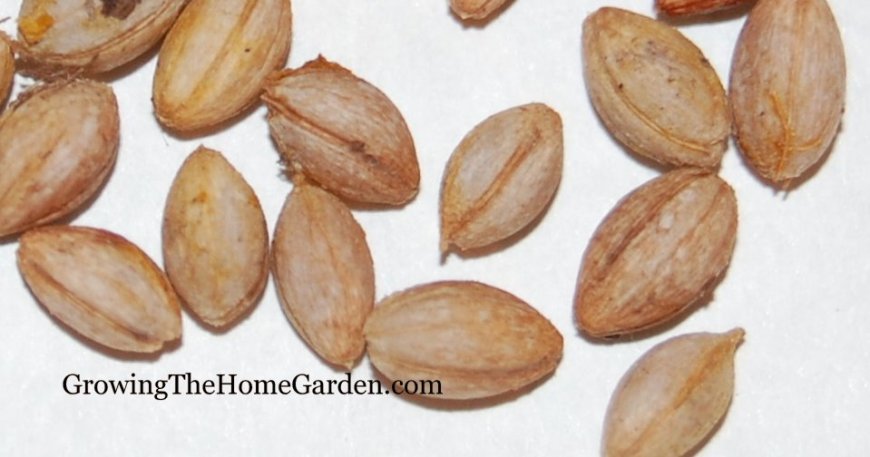
Seed starting is just about to begin in earnest for the year. In some cases the seeds you might want to grow may require some extra steps to germinate best. Annuals tend to do just fine without much pretreatment but often perennials need a period of cold to break dormancy and begin to germinate. This cold period is called cold stratification. Cold stratification simulates the nature seasonal variations the seeds are used to experiencing.
25 Perennial Plants that Benefit from Cold Stratification
Not all perennials require cold stratification but the plants listed on the table below benefit from periods of cold. There are many techniques to break dormancy with cold stratification. I’ve included four potential ways you can cold stratify your seeds but there are many variations of those methods you can try.

| Plant | Hardiness Zone | Cold Stratification Time |
|---|---|---|
| Milkweed (Asclepias spp.) | 3-9 | 30-60 days |
| Perennial Sweet Peas (Lathyrus odoratus) | 4-9 | 4-6 weeks |
| Black-Eyed Susans (Rudbeckia spp.) | 3-9 | 4-6 weeks |
| Columbines (Aquilegia spp.) | 3-8 | 4-8 weeks |
| Delphiniums (Delphinium spp.) | 3-8 | 6-8 weeks |
| Foxgloves (Digitalis purpurea) | 4-8 | 4-6 weeks |
| Lupines (Lupinus spp.) | 3-8 | 4-6 weeks |
| Lavender (Lavandula spp.) | 5-9 | 4-6 weeks |
| Monkshood (Aconitum spp.) | 3-8 | 4-6 weeks |
| Penstemons (Penstemon spp.) | 4-9 | 4-6 weeks |
| Primroses (Oenothera spp.) | 4-9 | 4-8 weeks |
| Roses (Rosa spp.) | 3-9 | 6-8 weeks (some may not require) |
| Sages (Salvia spp.) | 4-9 | 4-6 weeks |
| Snapdragons (Antirrhinum majus) | 5-9 | 4-6 weeks |
| St. John’s Wort (Hypericum perforatum) | 3-8 | 4-6 weeks |
| Viburnums (Viburnum spp.) | 3-8 | 3-4 months |
| Yarrow (Achillea millefolium) | 3-9 | 4-6 weeks |
| Butterfly Bushes (Buddleia davidii) | 5-9 | 4-6 weeks |
| Balloon Flowers (Platycodon grandiflorus) | 3-8 | 4-6 weeks |
| Clematis (Clematis spp.) | 4-8 | 4-6 weeks (some may not require) |
| Purple coneflower (Echinacea purpurea) | 3-9 | 4-6 weeks |
| New England aster (Symphyotricum novae-angliae) | 3-8 | 4-6 weeks |
| Joe Pye weed (Eupatorium purpureum) | 3-8 | 4-6 weeks |
| Bleeding hearts (Dicentra spectabilis) | 3-8 | 6-8 weeks |
Echinacea
Echinacea will benefit from cold stratification. Alternatively you can direct sow seeds in the fall for spring germination.
Here are 4 Simple Ways to Cold Stratify Seeds
Moist Paper Towels Method
For this method, start by spreading seeds evenly on a damp paper towel. Fold the towel to cover the seeds completely, and place the arrangement in a sealed zip-lock bag. Label the bag with the name and date before refrigerating it for the specified duration, which may vary based on the seed variety. Be vigilant for any signs of mold and mist with water if necessary. This worked very well for me when I cold stratified Japanese maple seeds. They actually began germination in the refrigerator.
Sand or Perlite Mixture Method
To employ the Sand or Perlite Mixture method, combine damp sand or perlite with seeds in a container, maintaining a ratio of 3:1 for sand or perlite to seeds. Label the container and transfer it into a zip-lock bag, refrigerating it for the recommended time. Ensure the mixture remains slightly moist but not overly saturated to promote optimal conditions for seed storage. Larger seeds work well in sphagnum peat moss. How to Grow Ginkgo trees from Seed.
Direct Sowing in Pots Method
In the Direct Sowing in Pots method, sow seeds directly in an outdoor pot or cold frame, covering them with soil. Water the seeds thoroughly and ensure proper drainage to foster a conducive environment. Rely on Mother Nature to provide the necessary natural cold period throughout the winter season. Keep in mind that this method might not be suitable for all climates or plant types. Always protect your trays and pots from animals. Squirrels and chipmunks have voracious appetites and will dig through your pots to get to your seeds.
Ice Cube Tray Method
For the Ice Cube Tray Method, begin by filling ice cube trays halfway with water and freezing it. Once frozen, sprinkle seeds on the ice surface and add more water to cover them. Return the tray to the freezer for the specified duration. While this method offers good moisture control, it requires consistent monitoring to ensure the freezing temperatures necessary for successful seed treatment. When you are ready to plant you can place the cubes in your pots and allow them grow normally.
I will often store seeds in a refrigerator in their original seed packet. This seems to do the trick for cold stratification in most cases for the easier to germinate plants but may not work in all cases.
More on Growing Plants from Seed
Germinating Japanese Maple Seeds in a Plastic Bag
I love a nice Japanese maple! Who doesn’t? There are Japanese maples with variegated leaves, ones with deep burgundy colors, others with interesting shaped leaves that are highly dissected and many other kinds. The fall color on a Japanese is almost always guaranteed to be something special. Their…
How to Grow Sweetbay Magnolia from Seeds
No matter where I go when I see seeds that are ripe I’m tempted to collect them. That was the case when walking around Knoxville last year and seeing some ripe magnolia seeds on some Sweetbay magnolia plants. Sweetbay magnolias have several names including: sweetbay…
How to Save Seeds from Redbud Trees
Fall is a great time of the year for seed saving. Our plants have spent their time over the summer building up energy to produce seeds which will one day sprout, grow, and create new plants. Seedlings are essential to the diversity of a species….
Growing Dogwoods (Cornus kousa) from Seed in the Fall
A week ago we found ourselves at the doctors office for one of my children. Nothing major (this time), just a regular check up and physical so she could run cross country (Very cool that a 7 year old wants to run cross country!). After…
Self Sowing Coleus in the Garden
I love surprises in the garden. Plants that pop up where you least expect them – unfortunately those are usually called “WEEDS.” Sometimes though we find plants of value that pop up. Here are a few pictures of some self-sown coleus plants that came up…
California Poppies (Eschscholzia californica)
Last year I bought a packet of California poppy seeds. I planted the poppy seeds in the fall just like I do my red corn poppies and here they are now. The blooms are bright and nothing short of spectacular. The foliage isn’t too shabby…
Discover more from Growing The Home Garden
Subscribe to get the latest posts sent to your email.







